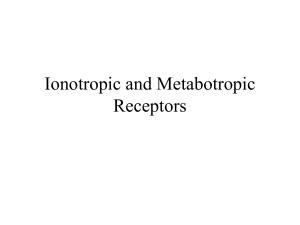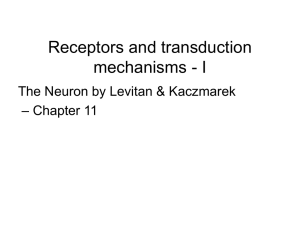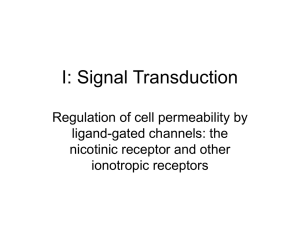Synaptic Transmission Lecture
advertisement
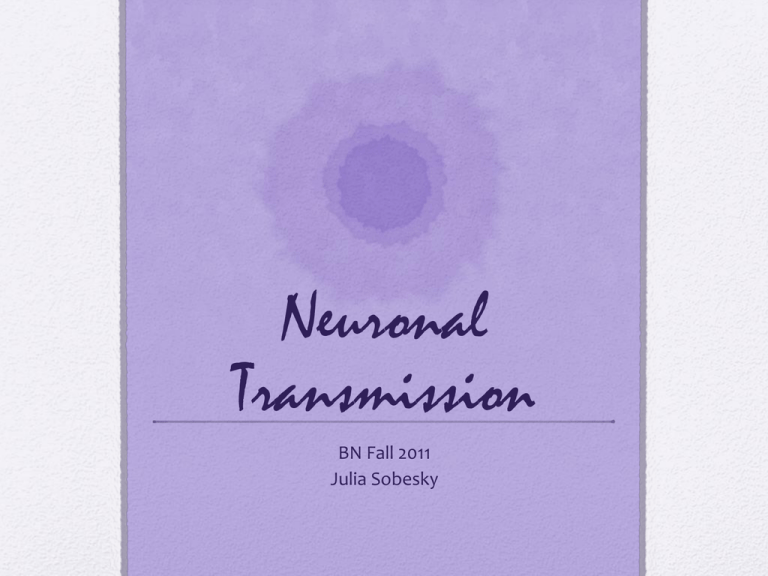
Neuronal Transmission BN Fall 2011 Julia Sobesky • Types of synapses • Electrical • Chemical Outline • Neurotransmitters • • • • Criteria Types Release Inactivation • Receptor types • Ionotropic • Metabotropic • Ligand binding • Plasticity Electrical synapse: gap junctions • ~3nm apart • Very fast communication • Direct pore between cells, allows bidirectional flow of ions • 6 connexins= 1 connexon • Allows rapid and synchronous firing of interconnected cells Why would we need anything more? • Why don’t our brains just use electrical transmission? Benefits of Chemical signaling • 60+ different NTs and neuromodulators • Each NT can have up to 15 different receptors • Co-localization of several NTs in one synapse • One neuron can have TONS of different synapses • Simple or complex post-synaptic responses The chemical synapse • ~20-50 nm apart • NTs released by presynaptic cell bind receptors on post-synaptic membrane • EPSP, IPSP or complex responses • *** The RECEPTOR determines the response, not the NT *** Criteria for NTs • Synthesized in presynaptic cell • Activity dependent release • Mechanism for deactivation • Predictable pharmacological activity Major classes of neurotransmitters • Small neurotransmitter molecules • Synthesized near axon terminals • Acetylcholine, monoamines, indolamines, amino acids • Large neurotransmitter moleculesNeuropeptides • Synthesized in soma • hormones • enkephalin/ endorphin • Soluble gasses • nitric oxide • carbon monoxide Small Neurotransmitters • 1. Amino Acids • Glutamate/ Gamma-aminobutyric acid (GABA) • MAJOR NTs in the CNS/ All over • 2. The Monoamines • Catecholamines • Dopamine- DA- reward/movement • Norepinephrine- NE –sympathetic • Epinephrine-released from adrenals • Indolamines • Serotonin -5-HT • 3. Acetylcholine (ACh) Amino Acids Catecholamines Glutamate Tyrosine Tyrosine Hydroxylase Glutamic Acid Decarboxylase (GAD) L-Dihydroxyphenylalanin (L-Dopa) GABA Dopamine Norepinephrine Epinephrine Then what? • NTs are synthesized at terminal and packaged • Or • Neuropeptides are transcribed, translated, packaged and trafficked down to the terminal • How does an Action Potential initiate their release? Exocytosis Ca++ facilitated SNARE Proteins What happens to NTs after release? • Diffusion through synapse to post-synaptic cell • NT binding to receptors is TRANSITORY, more NT around to bind, the greater the receptor effects • ……. 2 Main Types of Receptors Ionotropic • Ligand-gated ion channels • Directly alters the membrane potential Metabotropic • Slower, but can have greater effects • 2 types: • G-protein coupled • Tyrosine Kinase receptors Ionotropic Receptors • Excitatory (EPSP) or Inhibitory (IPSP) responses • K+, Na+, Ca++ • CL• Some can be ligand and voltage-gated (NMDA) Complex effects of metabotropic receptors • NO PORE, but binding can initiate: • 2nd messenger system • Other products could open ion channels • Modulate enzyme activity • Regulate ion channels in membrane • Initiate gene transcription/translation What happens to NTs after release? • Diffusion through synapse to post-synaptic cell • NT binding to receptors is TRANSITORY, more NT around to bind, the greater the receptor effects • NT must be cleared • removal just as important as release • Multiple things can happen…. Uptake and degradation Glial Sponge • Glial cells can act as buffers for excess NTs • Can process and release NTs • Passive diffusion away from the synapse • Why? NT binding to receptor shape-specific • Lock and key arrangement • Agonists • Endogenous vs. exogenous • Antagonists • Drugs work because we already have the receptors in place to receive them • Full vs. partial • Drug actions are so intense because they cause actions so far above and beyond what endogenous compounds do • Competitive vs. noncompetitive • Allosteric Receptor agonists and antagonists Organization dictated by experience • Synapses can grow and retract, continually being altered by use • Plasticity can occur in a variety of ways: • Create new synapses • Strengthen or weaken existing synapses • Break old connections Synaptic connections change over time Putting it all together: Neuropharmacology • Tolerance develops due to cellular and receptor alterations in response to chronic drug use • The changes also mediate withdrawal symptoms • Withdrawal= opposite of drug effects • Depression is most likely not due to a lack of serotonin (i.e. SSRIs) • …Serotonin receptor is metabotropic • Severe alcohol withdrawal can kill you: • Seizures • Glutamate excitotoxicity Organization dictated by experience Thanks! Questions?

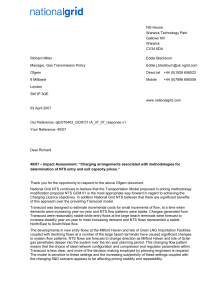
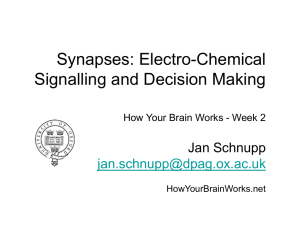


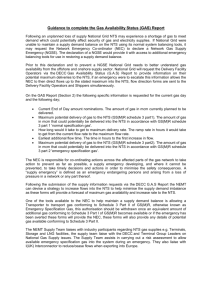
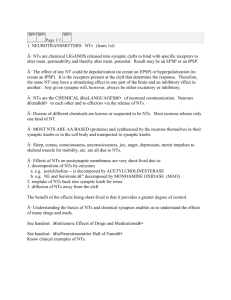
![Shark Electrosense: physiology and circuit model []](http://s2.studylib.net/store/data/005306781_1-34d5e86294a52e9275a69716495e2e51-300x300.png)
